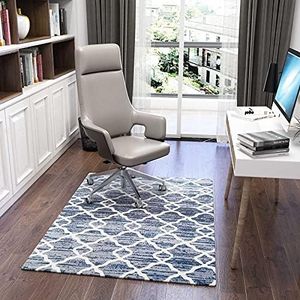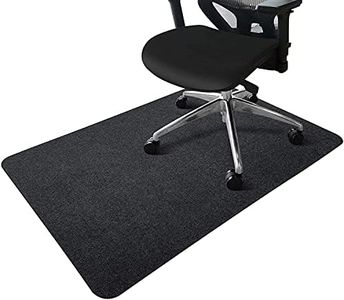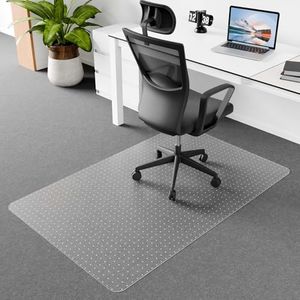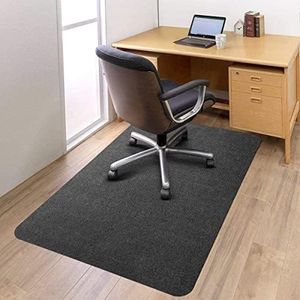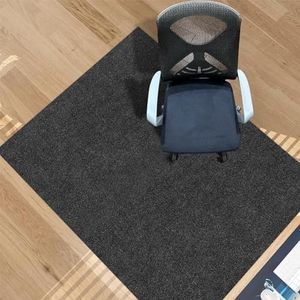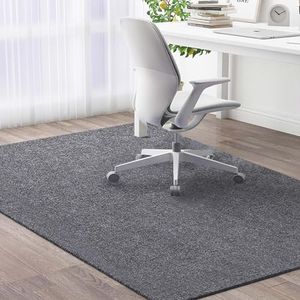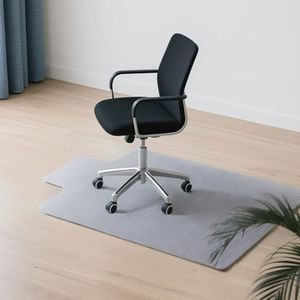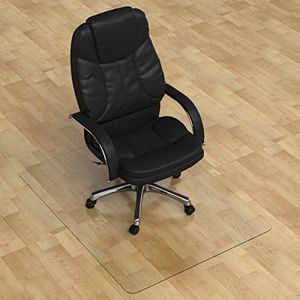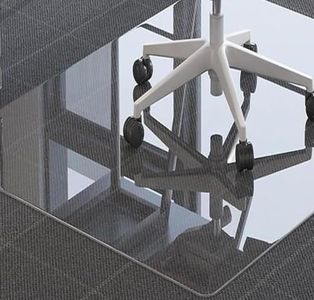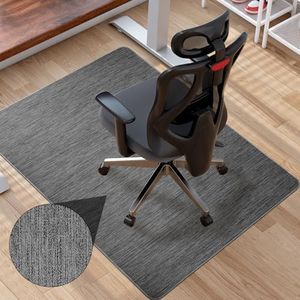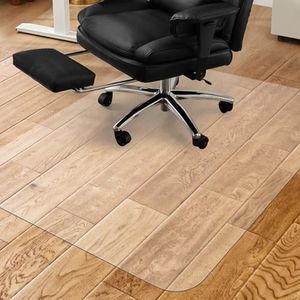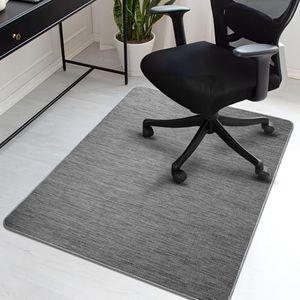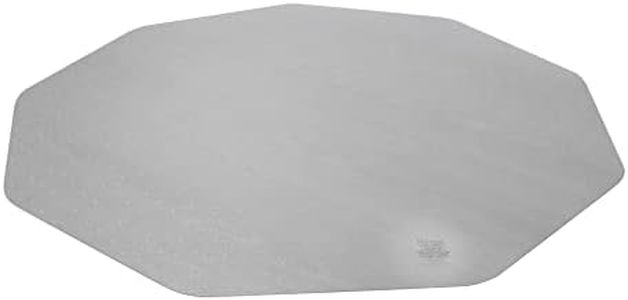We Use CookiesWe use cookies to enhance the security, performance,
functionality and for analytical and promotional activities. By continuing to browse this site you
are agreeing to our privacy policy
10 Best Chair Mats
From leading brands and best sellers available on the web.Buying Guide for the Best Chair Mats
Choosing the right chair mat may seem simple, but it can make a big difference in both the comfort of your workspace and the lifespan of your floors. A chair mat acts as a protective barrier between your floor and your chair casters, making it easier to move and preventing damage. The key is to consider the kind of flooring you have, the size of your workspace, and how much you move around in your chair. Understanding the main features will help you make the best choice for your needs.MaterialThe material of a chair mat determines its durability, flexibility, and how well it protects your floor. Common materials include plastic (like PVC or polycarbonate), glass, and rubber. Plastic mats are lightweight and affordable, suitable for light to moderate use. Glass mats are heavy-duty and look premium, ideal if you want a long-lasting, smooth surface, but they are heavier and pricier. Rubber mats are often used for anti-fatigue purposes or for extra grip and flexibility. To pick the right material, consider how much your chair will be moving, the weight placed on it, and the type of floor you want to protect.
Size and ShapeThe size and shape of the mat should match both your workspace area and the pattern in which your chair moves. Mats come in rectangular, square, and even contoured shapes to fit under desks or in larger open areas. Smaller mats are suitable for compact workstations with little movement, while larger or lipped mats are better for those who need to roll farther or wish to protect a larger area, such as under the desk and out to the sides. Consider how much you move your chair during your work and measure your space before deciding.
Floor CompatibilityChair mats are designed for specific floor types such as carpet, hard floors (wood, tile, laminate), or even both. Mats for carpet usually have small spikes or grippers underneath to prevent slipping, whereas hard floor mats have a smooth bottom to avoid scratching. Thin or plush carpets require mats with different thickness and grip levels. Always check the product label to ensure the mat is suitable for your flooring, as using the wrong type may damage the floor or cause the mat to slide.
ThicknessThickness affects both durability and how well the mat handles the weight and movement of your chair. Thin mats (about 1/8 inch) work for low-pile carpets or hard floors and light usage. Medium to thick mats (up to 1/4 inch or more) are needed for high-pile carpets or if you have a heavy chair and desk setup. If you notice your current mat cracking, denting, or not staying put, you likely need a thicker option. Choose based on your floor type and the amount of daily traffic.
Edge TypeEdge type refers to how the sides of the mat are finished. Beveled or sloped edges make it easier to roll on and off the mat, especially if you move frequently or have a heavy chair. Straight edges are fine for stationary setups where rolling over the edge is less common. Consider your chair movement habits to pick the one that suits you best.
Surface TextureSurface texture affects how easily your chair rolls and also whether the mat is comfortable for your feet. Smooth surfaces allow chairs to glide effortlessly, which is great for busy workspaces where mobility is key. Lightly textured or anti-slip mats offer more control and help prevent accidental sliding, which is helpful if you prefer a more stable seating experience. Think about whether you prefer sliding or stability in your daily use.

